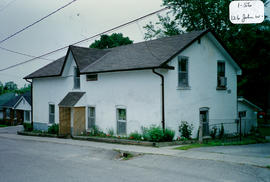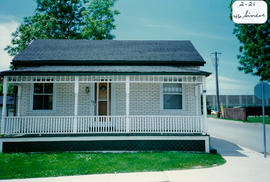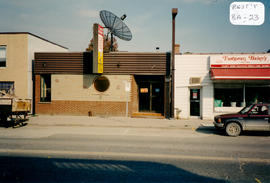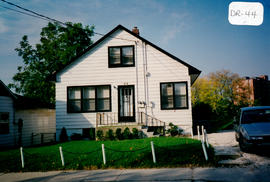- CA BWGPL GJ-HB-2017-04-04-16
- Item
- 1996
Part of George Jackson fonds
The mid-block structure located at 79 John St. East was built around 1860-1890’s in the Gothic Revival style. Originally, there was a shed and garage attached to the house at the rear and a vacant lot on the east side. This building was the home of Charles Aitcheson and his wife Carol for many years. He was a painter and decorator and he worked for Bill Sutton. Cyril Mestagh was the next owner of the house. He and his wife Jennie and their daughters (Vera and Gladys Irene) lived here. Cyril was a small, market gardener and a well-known grower. He hauled vegetables to the Toronto market. The house was sold when Cyril retired.
The 1½-storey structure has an ‘L’-shaped plan with a centre hall, a one-storey, rear, kitchen wing and a medium-pitched, gable roof. The asymmetrical façade has an off-centre, front gable above the façade projection. There is a raised, front porch with a shed roof set onto wood posts on brick. The steps, door, windows, and enclosing walls of the porch are not original. This building has small windows with high floor to ceiling heights. A wide, Regency-style, ground- floor window has a wide, centre opening flanked by narrow lights. It is set into a rectangular opening with a plain, wood frame and sill. An upper window is centred above the lower window in the projecting bay. It is also set into a rectangular opening with a plain, wood frame and sill. Only the 2/2 windows in the structure are original. The building has wood frame construction, vinyl siding (not original), and a parged, stone foundation. According to the 2000 inventory, some original details still remain. (1, 2, 3)
George Jackson










